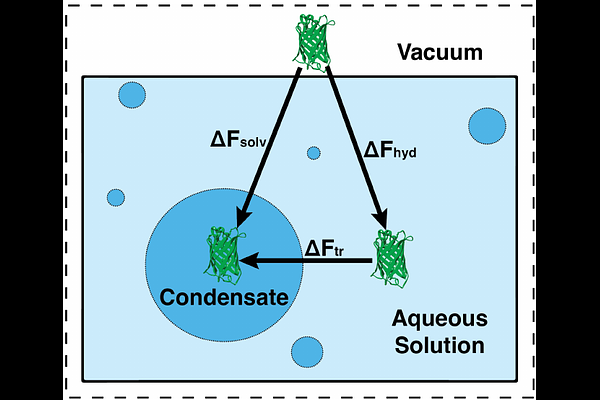Hydration free energy is a significant predictor of globular protein incorporation into condensates

Hydration free energy is a significant predictor of globular protein incorporation into condensates
Anderson, S.; Harrison, M.; Dignon, G. L.
AbstractMembraneless organelles (MLOs) are assemblies of biomolecules, which function without a dividing lipid membrane in a cellular environment. These MLOs, termed biomolecular condensates, are commonly formed by the thermodynamic process of liquid-liquid phase separation (LLPS) and assembly of large numbers of proteins, nucleic acids and co-solvent molecules. Within MLOs, certain biomolecule types are particularly causative of phase separation, and are termed \"scaffolds\" as they provide the major driving forces for self-assembly. Other molecules that are present in a condensate, but are less causative than the scaffold molecules are termed \"clients\". Much effort has recently decoded many of the molecular interactions underlying LLPS in search of predicting equilibrium concentrations and materials properties of condensates. In this work, we provide a simple computational approach to predict the partitioning of globular protein clients into condensates primarily composed of disordered protein scaffolds. Specifically, we use multiple methods to calculate hydration free energy of a series of globular proteins, and find that hydration free energy is relatively well-correlated with the partition coefficient of these proteins into condensates. We then provide a comparison of different hydration free energy predictors and discuss why some may provide a more accurate prediction of partitioning. Finally, we discuss the shortcomings of hydration free energy as a predictor by identifying other possible confounding factors such as specific interactions, charge matching, and differential solvation inside a condensate, which will aid in making more robust predictions in future studies trained on more diverse data sets.